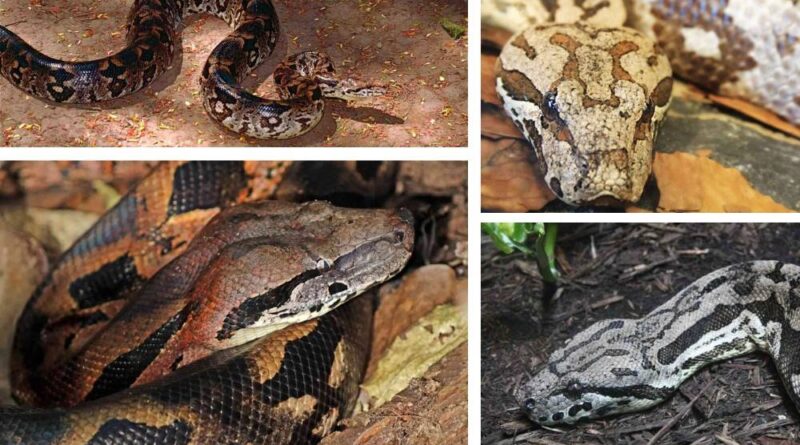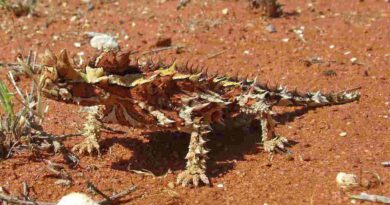Dumeril’s Boa: What You Need to Know for Care and Habitat
Dumeril’s Boa stands out as one of the most fascinating snake species in the reptile hobby. These Madagascar natives combine manageable size, docile temperament, and striking patterns, making them excellent pets for both novice and experienced snake keepers. Their unique characteristics and relatively straightforward care requirements have earned them a dedicated following among reptile enthusiasts.
This comprehensive guide covers everything you need to know about Dumeril’s Boa care. We examine their natural habitat, specific housing requirements, dietary needs, and essential health considerations. Whether you’re a first-time snake owner or an experienced keeper, understanding these fundamental aspects ensures your Dumeril’s Boa thrives in captivity.
Natural Habitat and Characteristics
Native to the island nation of Madagascar, Dumeril’s boa inhabits some of the most distinctive ecosystems in the world. Their natural environment and unique characteristics make them particularly well-adapted to their specific ecological niche.
Geographic distribution
Dumeril’s boas are endemic to Madagascar, specifically concentrated along the western coast and southwestern regions of the island. These snakes inhabit various terrain types, including:
- Dry forests and spiny thicket
- Highland grasslands
- Agricultural areas
- Village peripheries
The species thrives in semi-arid environments characterized by relatively low precipitation, distinctly different from Madagascar’s eastern rainforests.

Physical description
Dumeril’s boas display impressive physical characteristics that reflect their evolutionary adaptation to ground-dwelling life. Adults typically reach 6.5 feet (2 meters) in total length, though exceptional specimens can grow up to 8.5 feet (259 cm). Sexual dimorphism is evident in the species, with females generally achieving larger overall sizes while males develop longer, more slender tails.
Their coloration serves as effective camouflage in their natural habitat, featuring a gray-brown base color adorned with darker patches. This pattern provides excellent concealment among the leaf litter of their forest floor habitat, displaying subtle rainbow-like iridescence under certain lighting conditions.
| Gender | Average Size | Notable Features |
| Female | 6-7 feet | Larger body mass |
| Male | 4-6 feet | Longer tail |
Behavior and activity patterns
Dumeril’s boas exhibit fascinating behavioral patterns that vary with age and environmental conditions. Juvenile specimens maintain strictly nocturnal habits, while adults demonstrate cathemeral behavior, being active during both day and night periods. This adaptation allows them to maximize hunting opportunities while managing their exposure to predators and environmental conditions.
These snakes are primarily solitary creatures, preferring isolated existence except during the breeding season. As ambush predators, they employ a distinctive hunting strategy, remaining motionless for extended periods while waiting for potential prey to approach. Their ground-dwelling nature influences their hunting behavior, as they rarely climb and prefer to conduct their activities at ground level.
During the winter months, Dumeril’s boas undergo a period of brumation, a hibernation-like state that helps them conserve energy during less favorable conditions. This behavioral adaptation is crucial for their survival in their semi-arid natural habitat.
Housing Requirements
Providing appropriate housing is crucial for the health and wellbeing of Dumeril’s boa in captivity. A properly configured enclosure ensures these snakes can thermoregulate effectively while maintaining their natural behaviors.
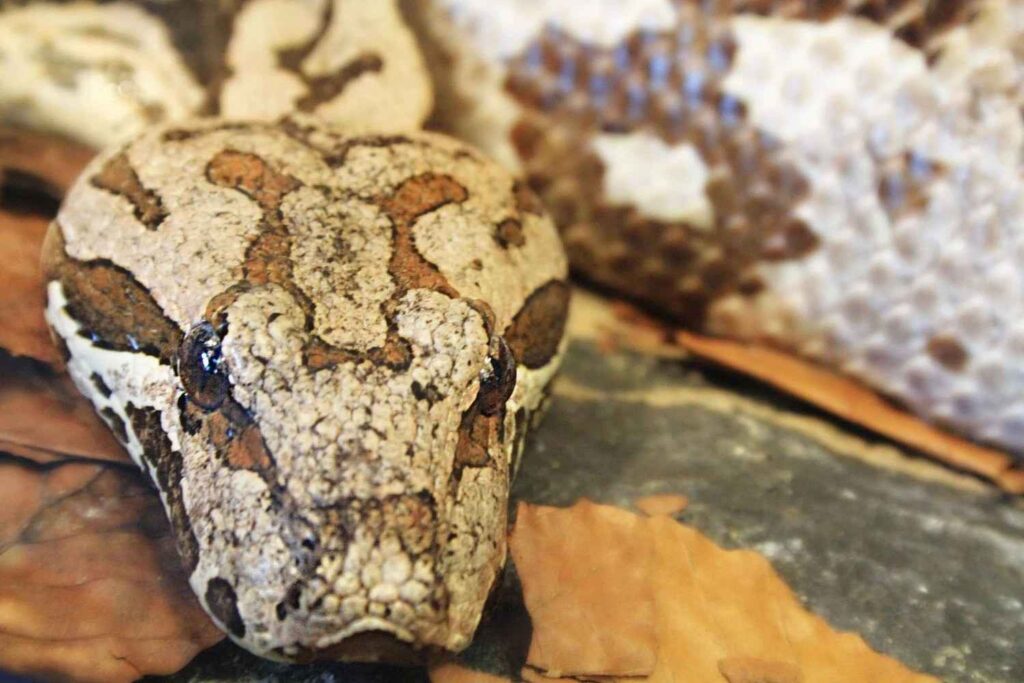
Enclosure size and setup
The enclosure size requirements for Dumeril’s boa vary based on the snake’s length. Here are the minimum dimensions (length x width x height):
| Snake Size | Imperial Measurements | Metric Measurements |
| Baby (<2′) | 2′ x 1.5′ x 1.5′ | 60 x 45 x 45cm |
| Juvenile (2-5′) | 4′ x 2′ x 2′ | 120 x 60 x 60cm |
| Adult (6-8′) | 6′ x 3′ x 3′ | 1.8 x 0.9 x 0.9m |
| Large Adult (>8′) | 8′ x 4′ x 4′ | 2.4 x 1.2 x 1.2m |
Front-opening enclosures are preferred as they reduce stress during handling. The enclosure must be secure, as these snakes are surprisingly strong and can exploit weak points to escape.
Temperature and humidity
Temperature gradient maintenance is essential for proper digestion and overall health. The enclosure should provide:
- Basking area: 86-88°F (30-31°C)
- Warm side: 80-84°F (27-29°C)
- Cool side: 70-75°F (21-24°C)
- Night temperature: 68-75°F (20-24°C)
Humidity levels should be maintained between 40 and 60%, with higher levels during shedding periods. Use digital probe thermometers and hygrometers for accurate measurements, placing them at snake-level height for precise readings.
Substrate and decorations
The substrate should be at least 4-6 inches deep to allow natural burrowing behavior. Recommended substrate options include:
- 60% organic topsoil mixed with 40% play sand
- Cypress mulch
- Reptile-specific bedding products
Essential decorations enhance environmental enrichment and provide security. The enclosure should include:
- Multiple hide boxes (both warm and cool sides)
- Large water bowl for drinking and soaking
- Sturdy branches for occasional climbing
- Natural leaf litter for additional cover
- Humid retreat filled with damp sphagnum moss
Clean the enclosure and decorations quarterly using appropriate disinfectants. Replace substrate when soiled, as Dumeril’s boas drink frequently and produce significant waste. Avoid pine or cedar products, as these contain harmful compounds that can cause respiratory issues.
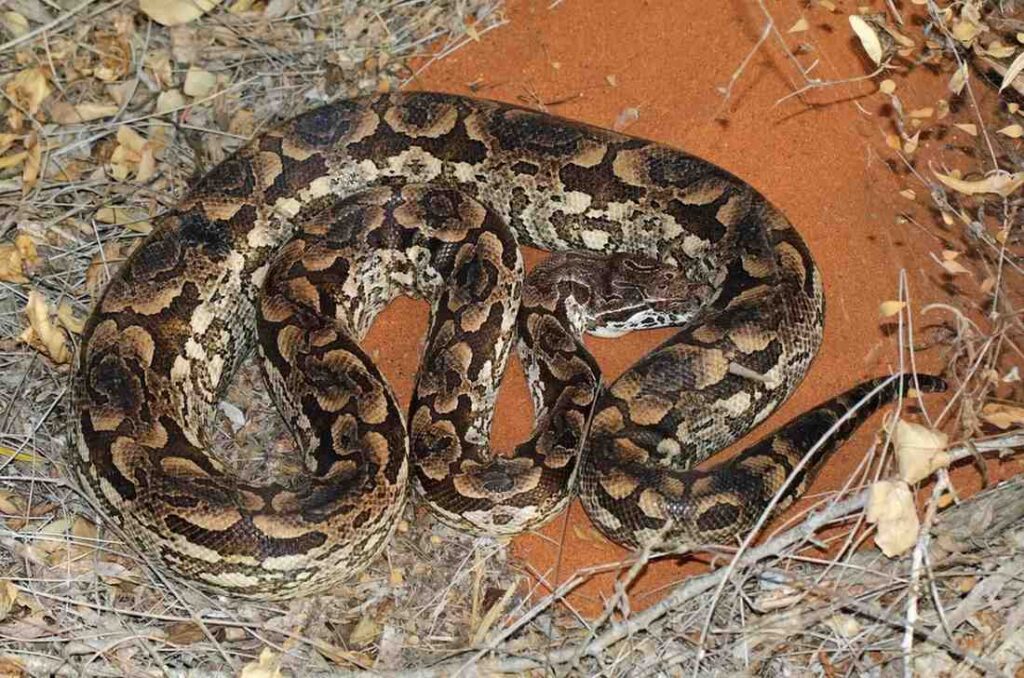
Diet and Feeding
Understanding the dietary requirements of Dumeril’s boa is fundamental to maintaining optimal health in captivity. These carnivorous constrictors possess specific feeding preferences and requirements that differ from other common pet snakes.
Prey types and sizes
Dumeril’s boas are opportunistic predators that consume a variety of prey in their natural habitat. In captivity, they thrive on a diverse diet, including:
- Mice and rats
- Young rabbits
- Birds (quail and chicks)
- Hamsters and Gerbils
- Guinea pigs
Prey size selection is crucial for proper nutrition and digestion. The following table provides recommended prey weights based on snake size:
| Snake Size | Prey Weight | Feeding Guidelines |
| Hatchlings (<22″) | 20-30g | Single prey item |
| Juveniles (2-3′) | 30-40g | Single prey item |
| Juveniles (3-4′) | 40-70g | Single prey item |
| Subadults (4-6′) | 70-130g | Single prey item |
| Large adults (7’+) | 130-250g | Single prey item |
Feeding techniques
Proper food preparation and presentation significantly influence feeding success. When offering frozen-thawed prey, follow these essential steps:
- Thawing process:
- Thaw prey in refrigerator overnight.
- Warm to 98-100°F before offering
- Use BPA-free plastic bags for warming.
- Never microwave prey items.
- Presentation methods:
- Use feeding tongs to offer prey.
- Create movement to stimulate hunting responses.
- Allow 30-45 minutes for prey acceptance.
- Consider covering the enclosure during feeding.
Some Dumeril’s boas display shy feeding behaviors, requiring specific accommodations. If your snake exhibits reluctance to feed, leave the room during feeding time. For particularly hesitant feeders, leaving pre-warmed prey overnight may prove successful, though this should be done only as a last resort.
Important feeding considerations:
- Always provide fresh water, as these snakes drink frequently.
- Skip one feeding cycle if the snake shows disinterest.
- Never refreeze frozen prey items.
- Avoid offering live prey to prevent injury to the snake.
- Monitor feeding responses and adjust schedules accordingly.
During digestion, Dumeril’s boas typically retreat to their warm hiding spots. This behavior is normal and should not cause concern. Maintain proper enclosure temperatures to support efficient digestion, as these snakes operate at lower temperatures compared to other boas.
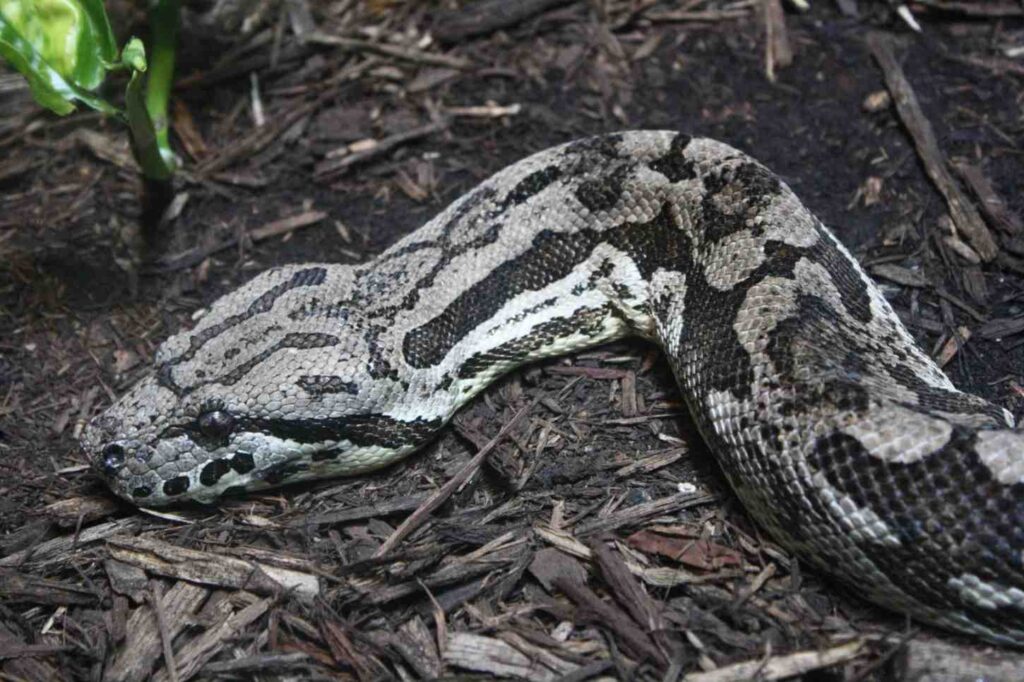
Health and Maintenance
Maintaining optimal health for Dumeril’s boa requires vigilant monitoring and proper care routines. These remarkable reptiles can live beyond 20 years in captivity when provided with appropriate healthcare and maintenance.
Common health issues
Proactive health monitoring serves as the cornerstone of preventing common ailments in Dumeril’s boas. Establish a weekly health monitoring routine that includes:
| Monitoring Parameter | Frequency | What to Check |
| Weight | Weekly | Sudden changes |
| Behavior | Daily | Activity levels |
| Feeding response | Each meal | Interest in food |
| Breathing | Daily | Signs of labored breathing |
| Skin condition | Weekly | Abnormalities or injuries |
Record-keeping proves essential for tracking your snake’s health patterns. Maintain detailed records of:
- Feeding dates and prey size
- Weight measurements
- Shedding cycles
- Behavioral changes
- Environmental parameters
Common health indicators to monitor:
- Rapid weight loss
- Lethargy or unusual behavior
- Respiratory difficulties
- Abnormal waste production
- Changes in feeding patterns
Shedding care
Dumeril’s boas undergo regular shedding cycles, with the process typically lasting 7-14 days. During pre-shed, the snake’s eyes become opaque and blue, indicating the beginning of the cycle. The following phases characterize a healthy shed:
- Pre-shed phase:
- Scale dulling
- Eye opacity
- Decreased activity
- Reduced appetite
- Active shedding:
- Maintain humidity between 50-60%
- Provide access to fresh water.
- Ensure proper substrate moisture.
- Avoid handling during this period.
For problematic sheds, create a humidity chamber using:
- A plastic container with ventilation holes
- Warm, damp towels
- Regulated temperature of 85°F
- Maximum exposure time of one hour
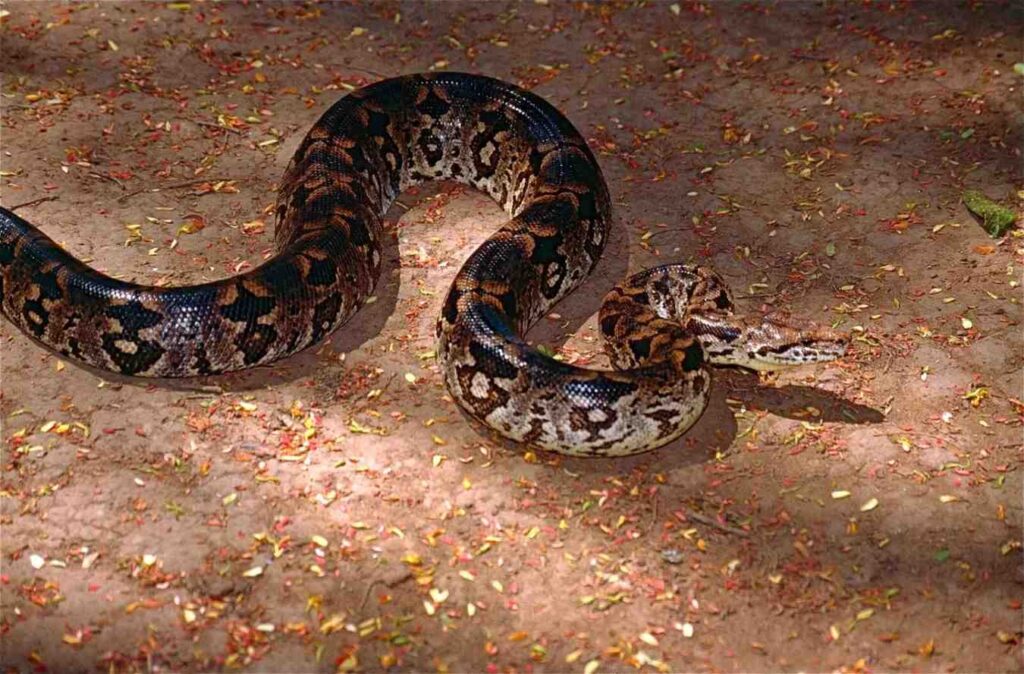
Handling and socialization
Dumeril’s boas generally display docile temperaments, making them excellent candidates for regular handling. However, proper technique remains crucial for both snake and handler safety.
Essential Handling Guidelines:
- Wait two weeks after acquisition before handling
- Support the snake’s body weight properly.
- Avoid handling for 48 hours post-feeding.
- Limit sessions to 20-30 minutes.
- Never handle during shedding.
- Keep the snake’s head away from your face.
- Prevent neck wrapping
- Use gentle, confident movements.
Hook Training Protocol:
- Use a snake hook to tap the snake gently.
- Allow the snake to recognize the hook’s presence.
- Guide approximately one-third of the body out
- Support the snake with both hands.
- Maintain consistent handling patterns.
Monitor these behavioral indicators during handling:
- Rapid tongue flicking
- Defensive coiling
- Increased breathing rate
- Attempt to retreat
- Unusual muscle tension
Important Safety Considerations:
- Wash hands before and after handling
- Maintain proper support throughout the session.
- Watch for feeding response triggers.
- Keep handling sessions brief initially.
- End sessions when the snake shows stress signs.
Establish a regular handling routine to maintain socialization, but remain mindful of individual temperament variations. Some specimens may tolerate more frequent handling, while others prefer minimal interaction. Keep an eye on how your snake behaves and make necessary adjustments.
For emergency situations, maintain a basic reptile first-aid kit containing:
- Antiseptic solution
- Sterile gauze
- Betadine solution
- Digital thermometer
- Emergency contact information for a reptile veterinarian
Regular health assessments by a qualified reptile veterinarian ensure early detection of potential issues. Schedule annual check-ups and maintain detailed records of all veterinary visits and treatments.
Final Thought on Dumeril’s Boa
Dumeril’s Boas represent an excellent choice for reptile enthusiasts seeking a remarkable pet snake species. Their manageable size, docile nature, and striking appearance combine with straightforward care requirements to create an engaging and rewarding keeping experience. Success with these magnificent creatures depends on proper habitat setup, careful attention to temperature and humidity levels, appropriate feeding schedules, and regular health monitoring.
These Madagascar natives reward dedicated keepers with decades of companionship when provided proper care and attention. Regular handling sessions build trust between snake and keeper, while consistent maintenance routines ensure optimal health throughout their lives. Proper research, preparation, and commitment to meeting their specific needs allow these fascinating reptiles to thrive in captivity, making them truly exceptional additions to any serious reptile collection.
